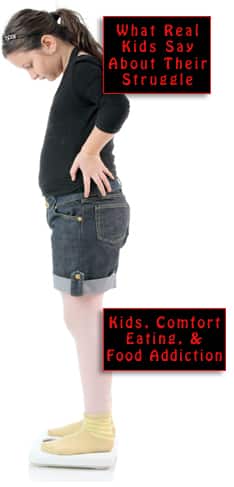
While semaglutide-based drugs like Ozempic and Wegovy have become popular tools for weight loss, many people still prefer to lose weight without relying on medication. For those looking for a natural approach, research shows that certain nutrients and eating habits can stimulate the same biological pathways that these drugs target.
Specifically, eating more fiber and healthy fats — like those found in olive oil and avocados — as well as paying attention to meal timing, food order, eating speed, and chewing thoroughly, can naturally boost the body’s production of GLP-1, a hormone that plays a key role in appetite control and digestion.
Mary J. Scourboutakos, Adjunct Lecturer in Family and Community Medicine, University of Toronto, who has a Ph.D. in nutrition, doled out advice and looked at some studies supporting it. According to Dr. Scourboutakos,
A strategic approach to weight loss rooted in the latest science is not only superior to antiquated calorie counting, but also capitalizes on the same biological mechanisms responsible for the success of popular weight-loss drugs.
Semaglutide medications work by increasing levels of GLP-1 (glucagon-like peptide 1), a hormone that signals fullness and slows digestion. They also block DPP-4, an enzyme that normally breaks down GLP-1 quickly. This dual action allows the hormone to remain active in the body for much longer (sometimes up to a week), helping people feel full for extended periods and eat less as a result.
But medication isn’t the only way to elevate GLP-1, as we’ve explored in some of our previous posts. There are some less expensive regimens that could serve as alternatives to taking weight loss drugs.
What you eat matters
Fiber, especially from beans, vegetables, whole grains, nuts, and seeds, is a powerful GLP-1 booster. When gut bacteria ferment fiber, they produce short-chain fatty acids that trigger GLP-1 release. This may help explain why higher fiber intake is consistently linked to weight loss, even without cutting calories.
Monounsaturated fats, like those in olive oil and avocados, can also increase GLP-1. Nuts like pistachios, which are rich in both fiber and healthy fats, have also been shown to boost GLP-1.
How you eat is just as important
Beyond food choices, how you eat can also influence GLP-1. Meal sequence makes a difference: eating protein before carbs, or vegetables before carbs, leads to greater GLP-1 release than the reverse order.
Timing matters too
Like other hormones, GLP-1 follows a daily rhythm. Eating a meal in the morning, such as at 8 a.m., triggers a stronger GLP-1 response than eating the same meal in the evening. This helps explain the wisdom behind the saying, “Eat breakfast like a king, lunch like a prince, and dinner like a pauper.”
The pace of eating and chewing also affects GLP-1 levels
One study found that slowly eating ice cream over 30 minutes led to higher GLP-1 levels than eating it quickly in five minutes. However, when vegetables are eaten first, the speed of eating seems to matter less in terms of blood sugar response.
Even how well you chew your food can play a role. Chewing cabbage, for example, increased GLP-1 levels more than drinking it as a purée.
Food vs. medication
While these dietary strategies can raise GLP-1 levels, the effects are still modest compared to medications, Dr. Scourboutakos points out. For example, a Mediterranean diet was shown to raise GLP-1 to around 59 picograms per milliliter, while even the lowest dose of Ozempic can push levels to 65 nanograms per milliliter, which is over 1,000 times higher.
Still, when it comes to long-term health outcomes, food may have the edge. Dr. Scourboutakos writes that…
[…] when you compare long-term risk for diseases like heart attacks, the Mediterranean diet lowers risk of cardiac events by 30 per cent, outperforming GLP-1 medications that lower risk by 20 per cent. While weight loss will always be faster with medications, for overall health, dietary approaches are superior to medications.
Dr. Scourboutakos’ advice for a drug-free weight loss approach includes:
- Eating a substantial breakfast, or frontloading your calorie intake earlier in the day
- Including a fiber-rich food at every meal
- Making olive oil a regular part of your diet
- Eating protein and vegetables before carbohydrates
- Snacking on fiber- and fat-rich nuts like pistachios
- Chewing your food thoroughly
- Eating slowly and mindfully
What else can you do to lose weight without the meds?
A recent article on the Medical News Today website also dug deep into some proven, drug-free strategies to lose weight and keep it off. Besides of the ones mentioned above and a few other, most obvious ones like recommending regular physical activity. The three we’d like to mention are intermittent fasting, tracking your progress, and getting enough sleep.
Intermittent fasting
Intermittent fasting involves cycling between periods of eating and fasting, typically within a set window of time each day. It encourages weight loss primarily by helping people consume fewer calories overall. A 2022 meta-analysis found that intermittent fasting, when practiced for up to 26 weeks, can be just as effective for losing weight as a traditional low-calorie diet. Of course, fasting isn’t for everyone, even adults, so it’s best to consult your doctor.
Common forms of intermittent fasting include:
- Alternate-day fasting: This method involves fasting every other day, while eating normally on non-fasting days. A modified version allows 20–30% of daily caloric needs on fasting days.
- The 5:2 diet: Fast (or drastically reduce calorie intake) for two days each week and eat normally on the other five.
- The 16:8 method: This plan limits eating to an eight-hour window each day (e.g., noon to 8 p.m.) and involves fasting for the remaining 16 hours. It’s often referred to as time-restricted eating.
Tracking your weight-loss progress
Keeping a record of daily food intake, physical activity, and weight progress can significantly support weight loss goals. Using journals, apps or online trackers helps people become more aware of their habits and encourages healthier choices.
A 2020 review found that this kind of self-monitoring can drive behavior change and increase motivation. A 2021 study also linked consistent food and weight tracking with more successful weight loss, particularly among users who logged their meals diligently. Additionally, a 2022 review suggests that wearable fitness trackers can improve activity levels, fitness, and body composition.
Getting enough sleep
Finally, this article took a comprehensive look at childhood obesity causes and treatment. We’ve covered plenty of that over the years on this blog, but the article reminds us that…
Studies show children who sleep less are more likely to be overweight or obese, and the risk increases with shorter sleep duration. A review of 17 studies found that children of all ages who slept less than the recommended amount had a 58% increased risk of being overweight or obese.
So, just how much sleep do children need? The American Academy of Sleep Medicine recommends (and the American Academy of Pediatrics endorses) the following amounts of sleep by age group:
Ages 4-12 months: 12-16 hours (including naps)
Ages 1-2 years: 11-14 hours (including naps)
Ages 3-5 years: 10-13 hours (including naps)
Age 6-12 years: 9-12 hours
Age 13-18 years: 8-10 hours
Even though these natural strategies may seem obvious and may not match the potency of medications, they offer a sustainable, side-effect-free way to manage weight and improve overall health.
Your responses and feedback are welcome!
Source: “Nature’s Ozempic: What and how you eat can increase levels of GLP-1 without drugs,” The Conversation, 5/15/25
Source: “How to naturally lose weight fast,” Medical News Today, 5/14/25
Source: “Childhood Obesity Causes and Treatments,” Very Well Health, 5/13/25
Image by Vanessa Loring/Pexels

 FAQs and Media Requests:
FAQs and Media Requests: 











